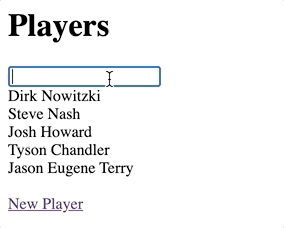28 Nov 2020
This post is a lightly edited version of an internal update I sent to everyone at CareerPlug after the completing our second product cycle, modeled on Basecamp’s Shape Up method. I am making these updates public in hopes that others will find value in the lessons learned from a real team adopting a fairly radical new product development process.
The first update includes more information about our product team and our company, for context. Italicized text are extra context I’ve added for the public version of this update.
Let’s dig in. -David
Read the rest
Six-minute read
15 Nov 2020
August 5, 2021 update: Since publishing this post, Turbo was released. While the method described here for building a live search interface with Stimulus still works just fine, if you’re using Stimulus, you might be interested in the other half of Hotwire on the web. In August of 2021, I published a post describing how to build the same interface described here with hotwire-rails, instead of just Stimulus.
Today we’re going to build a search form that instantly filters results using Ruby on Rails and Stimulus, a “modest” JavaScript framework designed to add small bits of interactivity without a lot of heavy lifting.
When we’re finished, we’ll have a list of Players that users can search by name. As they type in the search box, we’ll make a request to the server for players that match and display the results on the frontend (almost) instantly. Here’s what the end result will look like:

Read the rest
15-minute read
07 Nov 2020
If you use Ruby on Rails, you’ve probably heard of Stimulus, a “modest” JavaScript framework for sprinkling in small bits of JavaScript to your mostly-HTML front-end. Instead of reaching for the monster JavaScript frameworks that have become very popular in recent years, Stimulus gives you the tools to add just enough interactivity while relying on plain-old Rails and HTML as often as possible.
To show you the power and simplicity of Stimulus we’re going to build a simple Stimulus-powered implementation of a commenting form. When we’re finished we’ll have a comment form that skips a page turn and neatly renders our new comments as we create them, without jQuery or JS partials — just a little bit of Stimulus-flavored JavaScript and HTML.
Read the rest
21-minute read
